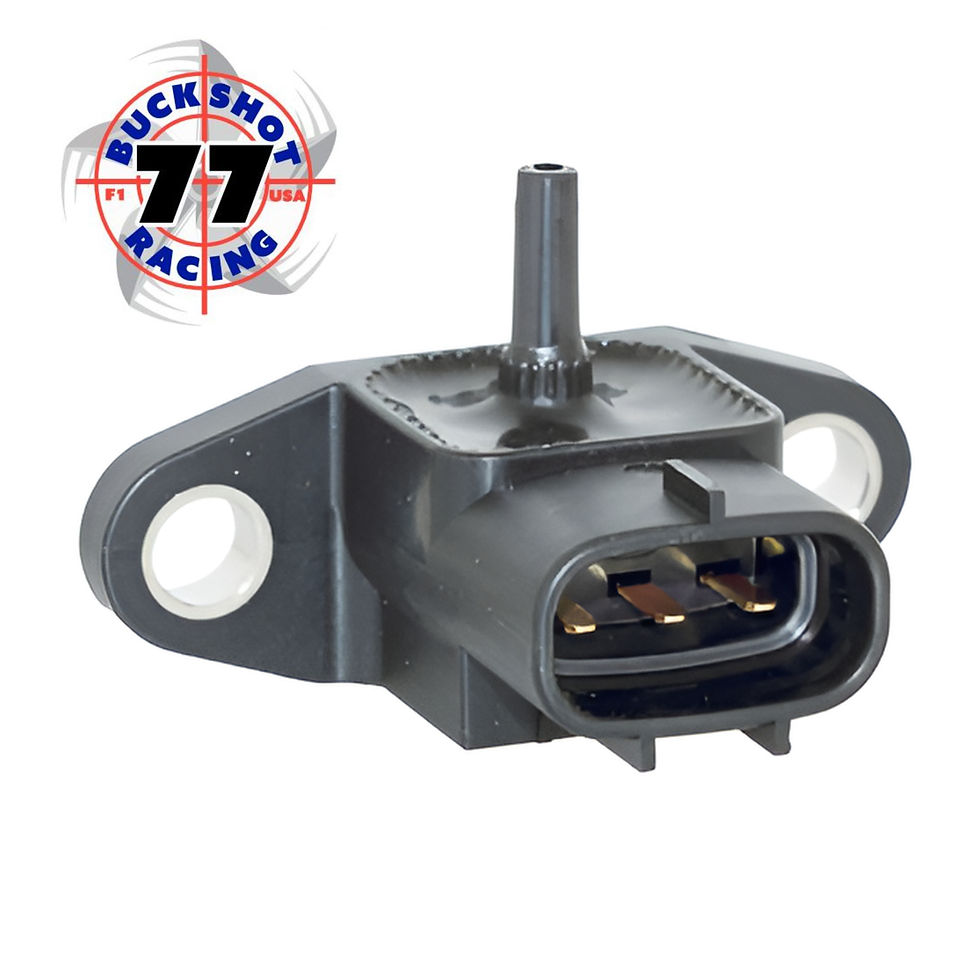The Mercury Racing 2.5L 280 EFI ROS and others are high-output two-stroke outboard designed for extreme RPM and race-level performance. Its fuel delivery system depends on accurate manifold pressure input, supplied by the MAP sensor, part number 825762. This sensor is a critical input to the ECM, allowing the engine to adjust injector timing in real time based on engine load and atmospheric pressure.
Without precise MAP data, combustion control breaks down—resulting in lean conditions, rich mixtures, or power loss. On the 280 EFI ROS, where the powerband is narrow and fueling must remain exact across all throttle positions, the 825762 sensor enables that control.
The MAP sensor monitors absolute pressure in the intake manifold and sends a voltage signal to the ECM. This voltage varies according to manifold vacuum. At idle or deceleration, vacuum is high and voltage is low. As throttle opens, pressure increases, and voltage rises accordingly.
The ECM uses this signal to calculate engine load and determine the appropriate fuel injection pulse width. In Mercury’s DFI systems, this allows fast, adaptive fueling adjustments across varying RPM and load conditions. The 825762 sensor’s voltage range and response rate are tuned for use with V6 DFI engines, like the 280 EFI ROS, where high-speed transitions require rapid sensor feedback.
Diagnosing Sensor Malfunction
Sensor failure typically causes unstable idle, hesitation, or poor throttle response. On the 280 ROS, MAP sensor errors can also lead to misfire or detonation under load.
To test, a digital multimeter is used to monitor sensor voltage with key-on/engine-off and then during operation. Normal readings should be near 4.5–5.0 volts at rest, decreasing as vacuum increases. A vacuum pump can simulate pressure changes. Faulty sensors may produce erratic or unchanging output. Wiring issues such as corrosion at the connector should also be checked, especially in saltwater environments.
Engine Coverage and System Compatibility
While built for the 280 EFI ROS, the 825762 MAP sensor is also used on a range of Mercury and Mariner V6 DFI outboards between 150 and 250 HP. These include: V-135 DFI (2.5L), V-150 DFI (2.5L), V-200 DFI (3.0L), V-225 DFI (3.0L), and V-250 DFI (3.0L).
These models use Mercury’s direct fuel injection architecture, which requires accurate manifold pressure sensing for correct injector control. While some models share architecture with EFI engines, the 825762 sensor is not used in carbureted or standard EFI setups—it is DFI-specific.
Part Verification and Replacements
Mercury part number 825762 is the official OEM MAP sensor for these applications. It may also appear under Quicksilver with the same number. While aftermarket options like CDI 134-7627 or Sierra 18-7708 are sold as substitutes, Mercury has not validated these for DFI systems, and their use in performance platforms like the 280 EFI ROS is not advised.
Sensor voltage output must match ECM expectations precisely. Using non-OEM variants risks incorrect fuel mapping, especially in high-RPM operation where DFI systems are most sensitive.
The 825762 MAP sensor is an integral part of Mercury’s V6 DFI engine management system, including its use in the 280 EFI ROS. It allows the ECM to adjust fuel injection based on real-time manifold pressure data, supporting high-RPM stability, acceleration, and consistent power delivery.
Its accuracy is essential—diagnosing or replacing it with an incorrect substitute can degrade engine performance and reliability. For any Mercury V6 DFI platform between 150 and 250 HP, especially race-tuned systems, maintaining MAP sensor integrity is non-optional.
Contact Mike Hill at +1-714-697-1716 or email mike@buckshotracing77.com for technical support.
top of page
SKU: 825762-77
$109.00Price
bottom of page





